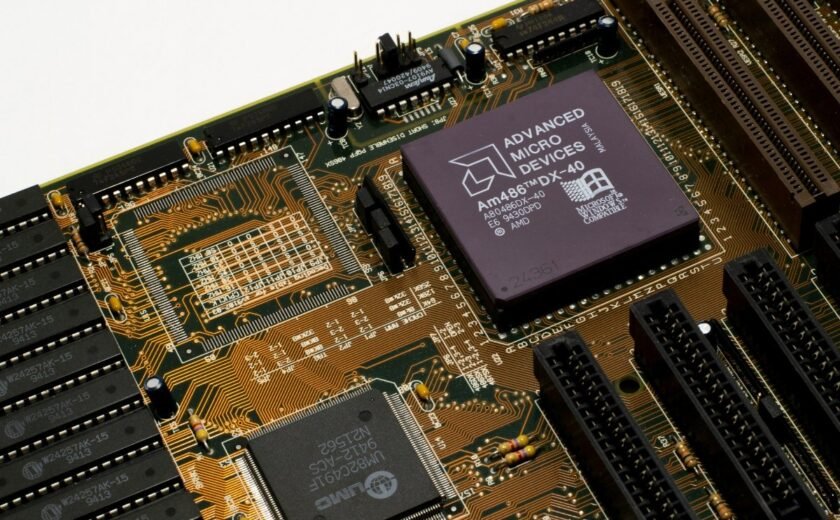The semiconductor industry is booming and the demand for skilled VLSI (Very Large Scale Integration) professionals has never been higher. With the rise of AI, IoT and advanced computing, companies are investing heavily in chip design, fabrication and semiconductor technology. According to reports, the global semiconductor industry is expected to reach $1 trillion by 2030, creating millions of job opportunities worldwide.
If you’re an electronics or electrical engineering student or a working professional, now is the best time to enter this high-growth sector. In this blog, we’ll explore the top 10 in-demand VLSI jobs and how you can prepare for them.
Top 10 High-Demand VLSI Jobs in 2025
1. Physical Design Engineer
- Role: Physical Design Engineers are responsible for placing, routing and optimizing circuits on silicon chips to ensure power efficiency and performance.
- Key Skills: Floorplanning, routing, clock tree synthesis, power analysis, timing closure.
- Tools Used: Cadence Innovus, Synopsys IC Compiler, Mentor Graphics tools.
2. Design Verification Engineer
- Role: Ensures the designed chips work as expected by running test simulations and debugging errors before fabrication.
- Key Skills: SystemVerilog, UVM (Universal Verification Methodology), testbench creation, debugging.
- Tools Used: Mentor Graphics Questa, Cadence Xcelium, Synopsys VCS.
3. RTL Design Engineer
- Role: Responsible for writing Register Transfer Level (RTL) code to define chip functionality before physical implementation.
- Key Skills: Verilog, VHDL, FPGA prototyping, synthesis.
- Tools Used: Xilinx Vivado, Synopsys Design Compiler, Cadence Genus.
4. Analog Layout Engineer
- Role: Works on designing custom analog circuits and layouts for high-performance chips.
- Key Skills: Circuit simulation, layout design, DRC/LVS verification.
- Tools Used: Cadence Virtuoso, Mentor Graphics Calibre.
5. DFT (Design for Test) Engineer
- Role: Ensures chips can be efficiently tested after manufacturing to detect defects.
- Key Skills: ATPG, JTAG, MBIST, scan insertion, boundary scan.
- Tools Used: Synopsys TetraMAX, Mentor Tessent.
6. ASIC Design Engineer
- Role: Works on custom chip designs for applications like smartphones, AI processors and automotive electronics.
- Key Skills: RTL coding, synthesis, backend verification.
- Tools Used: Synopsys IC Compiler, Cadence Innovus, Mentor Calibre.
7. FPGA Design Engineer
- Role: Designs and implements Field Programmable Gate Arrays (FPGAs) for real-time processing applications.
- Key Skills: VHDL, Verilog, embedded systems, SoC integration.
- Tools Used: Xilinx Vivado, Intel Quartus, Altera tools.
8. Semiconductor Process Engineer
- Role: Works in chip fabrication and manufacturing to optimize production and yield.
- Key Skills: Semiconductor physics, wafer processing, lithography, cleanroom operations.
- Tools Used: TCAD, SEM analysis, lithography simulators.
9. Memory Design Engineer
- Role: Develops memory architectures (SRAM, DRAM, Flash) for high-speed computing and embedded systems.
- Key Skills: SRAM, DRAM design, power optimization, low-power circuit design.
- Tools Used: Cadence Virtuoso, Synopsys Custom Compiler.
10. Chip Packaging Engineer
- Role: Focuses on the physical integration of chips into circuit boards, ensuring durability and performance.
- Key Skills: Thermal analysis, signal integrity, 3D packaging.
- Tools Used: Ansys HFSS, Cadence Allegro, Siemens EDA.
How to Prepare for a VLSI Career?
If you aspire to work in one of these high-paying VLSI jobs, follow these steps:
1. Gain Strong Fundamentals in VLSI
Learn digital electronics, semiconductor physics and circuit design in-depth.
Master Verilog & VHDL for hardware description and FPGA prototyping.
2. Get Hands-On Experience
Work on real-world chip design projects using Cadence, Synopsys and Mentor Graphics tools.
Participate in FPGA-based projects and competitions.
3. Enroll in an Industry-Recognized VLSI Course
A professional IIT-certified VLSI course, like MOSart Labs’ IIT Bhubaneswar-certified program, will give you an edge.
Hands-on training, placement support and IIT mentorship make all the difference.
4. Build a Strong Portfolio
Showcase VLSI design projects and simulations on GitHub or personal websites.
Work on open-source projects related to RTL design, chip verification and FPGA prototyping.
5. Get Certified & Apply for Internships
Certifications from IITs or leading semiconductor firms improve hiring prospects.
Intern with companies like Intel, Qualcomm, NVIDIA and Texas Instruments to get industry exposure.
[quads id=3]Why Choose MOSart Labs for VLSI Training?
MOSart Labs, in collaboration with IIT Bhubaneswar, offers a 12-month industry-oriented VLSI training program designed to prepare you for high-paying semiconductor jobs.
Program Highlights:
- IIT Bhubaneswar Certification – Gain a prestigious IIT diploma
- 100% Placement Support – Get placed in top semiconductor firms
- 4-Week Campus Immersion – Hands-on training at IIT Bhubaneswar
- Industry Experts & Faculty Mentorship – Learn from the best in the field
- Easy Loan & EMI Support – Pay after placement with ₹7.5LPA+ salary
Next Batch Starts on Feb 4, 2025 – Limited Seats Available!
Conclusion: The Future is VLSI!
With the semiconductor industry booming, skilled VLSI professionals are in high demand. Whether you aspire to be a Physical Design Engineer, ASIC Designer, or Verification Engineer, now is the best time to invest in a career in VLSI and chip design.
Want to break into the semiconductor industry?
Join MOSart Labs’ IIT Bhubaneswar-certified VLSI program and secure your dream core job in chip design today!


